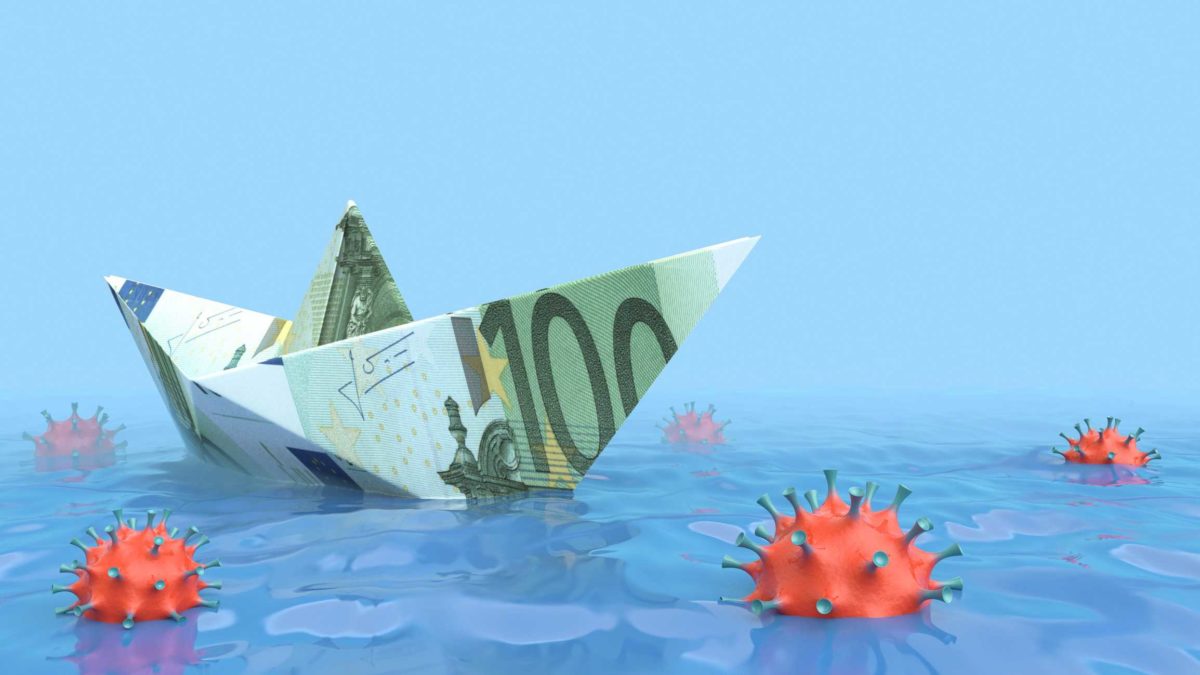Former United States President, John F. Kennedy, I'm told, coined the phrase, "A rising tide lifts all boats."
The idea is that when a country's economy is doing well, everyone benefits.
A quick look around the world today reveals very few nations in which the economy is performing well. Even countries like China that is still managing to post GDP growth is growing at a far slower pace than before the pandemic struck.
It was this realisation that panicked investors back in late February. Panic which saw the S&P/ASX 200 Index (ASX: XJO) plummet 36.5% from 20 February through to 23 March.
It was the same story in all the major global indexes. Technology shares proved equally susceptible. Over the same time frame, the tech-heavy Nasdaq Composite (NASDAQ: .IXIC) fell 29.5%.
Then came the first waves of central bank and government stimulus, trillions of dollars' worth even as interest rates were slashed to rock bottom levels.
And, lo and behold, the rising tide of money lifted all shares.
All shares are not created equal
Well, not all shares lifted. To stretch the analogy, some companies are like leaky hulls, and the tide rose without them.
But the vast majority of shares surged on the flood of easy money.
The ASX 200 gained 35.7% from 23 March to 19 August. It's down 3.2% since then.
With tech shares shining in the global shift to working, shopping and socialising from home, the Nasdaq's moves were even more impressive. The Nasdaq gained 75.7% from 23 March through to 2 September. It's down 11.5% from that all-time high.
Why shares are poised for a fresh run higher
Shares have been slipping over the past weeks largely based on fears that monetary and fiscal stimulus could fade before the virus is under control and companies can again stand on their own free market feet.
To give you some idea of just how sensitive share prices have become to stimulus measures, let's have another look at the Nasdaq.
Yesterday, overnight Aussie time, the Nasdaq finished the day up 0.4%. Not bad. But at 2pm New York time, the index had been up 2.3% before dropping 1.4% in the final hours of the trading day.
Why the early surge and late afternoon selloff?
Hopes and fears over if, when, and how big the next US government stimulus package will be.
Investors piled into shares after hearing that Nancy Pelosi, the Democratic House Speaker, and Treasury Secretary, Steven Mnuchin, were both amenable to fresh negotiations on the stalled stimulus measures.
Investors headed for the exit just hours later when news leaked that the Democrats are still pushing a US$2.4 trillion (AU$3.4 trillion) package which Republicans are unlikely to accept.
While there are no guarantees, it's almost unimaginable that the two sides won't reach an agreement sooner rather than later to buoy the US economy and share markets. President Donald Trump has already bridged the gap, saying he'd accept a US$1.5 trillion proposal.
Meanwhile…
While the US is working through its partisan issues, new stimulus measures are being unveiled on a daily basis across the world.
In the United Kingdom, which is looking at six months of new viral lockdowns, the Australian Financial Review (AFR) reports:
Britain has launched a "radical intervention" to head off a looming surge in unemployment…
Late on Thursday (AEST), Mr Sunak unveiled a six-month "Winter Economic Plan" – replacing the budget – which centred on a scheme to part-bankroll the wage bills of all small and medium-sized enterprises (SMEs), and also of any bigger companies who could prove they'd taken a COVID-19 hit.
He also pushed out the repayment terms and deadlines for billions of pounds of government loans, loan guarantees and tax deferrals, keeping the fiscal lifeline open for at least the next six months.
The Australian government is also spending big to support the economy. From the AFR:
The federal budget will remain in deficit for the foreseeable future and the government will not focus on a return to surplus and stabilising debt until the unemployment rate is "comfortably" below 6 per cent, Treasurer Josh Frydenberg says.
The budget to be released on October 6 is expected to forecast gross debt to exceed 45 per cent of GDP, pushing it close to or over $1 trillion…
And it's not just governments piling on debt in today's near-zero rate environment that's likely to fire up share markets. Aussie households have also received an easier path to new loans. As Bloomberg reports:
Australia will make it easier for banks to approve mortgages and small-business loans…
As part of a sweeping overhaul of so-called responsible lending obligations, the government will allow banks to rely on income and spending information provided by borrowers when assessing loan applications, rather than doing their own lengthy verifications, Treasurer Josh Frydenberg said…
As you'd expect, all the big four banks' share prices are rocketing on the news.
National Australia Bank Ltd. (ASX: NAB), for example, is up 7% in early afternoon trading.
Foolish takeaway
As mentioned above, all shares are not created equal. The rising tide of stimulus will lift some more than others. And some will even see their share prices fall, regardless of the flood of easy money.
Not even all of the 200 biggest listed companies, those who make up the ASX 200, will go up in value. But on average, as new stimulus measures take hold and investor sentiment lifts, their share prices should rise.
One way to gain access to the wider performance of the top 200 ASX companies is via the Ishares Core S&P/ASX 200 ETF (ASX: IOZ). The exchange-traded fund (ETF) aims to mirror the performance of the ASX 200 accumulation index, meaning share price moves plus dividends.
Closely in line with the index, the ETF is down 10% year to date and up 31% since 23 March.









